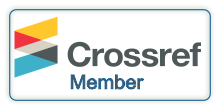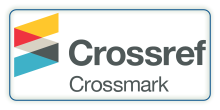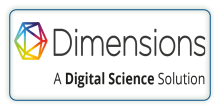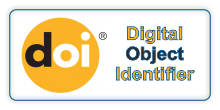RESOURCES’ IDENTIFICATION IN EDUCATION SYSTEMS
DOI:
https://doi.org/10.29121/digisecforensics.v1.i1.2024.12Keywords:
Identification System, Students’ Identification, Information Security Key, Unique Identification, Human Resource Identification, Material Resource IdentificationAbstract
The use of computers and internet for sharing information has proved to be reliable and cost-effective. Therefore, use of ICT in education systems is likely continue increasing in contributing to the efficiency of educational record keeping. However, it is necessary to secure computer equipment and information systems. Consequently, proactive measures to ensure security of data in education system is extremely important. This means education systems administrators, education policy makers and stakeholders need to have standard safety measures. The core governing principle for good standing information security posture in modern organization is confidentiality, integrity and availability (CIA). First, confidentiality is make data available or disclosed to authorize users only. Second, integrity is to preserve the accuracy and completeness of data both at rest and on-transit. Third, availability is to make information in education systems timely and reliably accessible to authenticated and authorized users. These security goals relies on adequate identification system. Identification is the key that verifies the authenticity of users and evaluate if a user is authorize to access the system. This paper provide identification technologies for both human and material resources in education systems. Since education data are stored in database, identification is a fundamental aspect of database system to create, retrieve, update and delete a record. Ultimately, identification of database record lays a solid foundation for CIA realization in information security
References
Abuhmaid, A. (2011). ICT Training Courses for Teacher Professional Development in Jordan. Turkish Online Journal of Educational Technology-TOJET, 10(4), 195-210.
Agilandeeswari, L., Ragul, V., Nihal, S. S. M., & Khan, M. R. (2020, December). A Comprehensive Analysis of Keystroke Recognition System. In International Conference on Intelligent Systems Design and Applications Springer, Cham. https://doi.org/10.1007/978-3-030-71187-0_99. DOI: https://doi.org/10.1007/978-3-030-71187-0_99
Andrejevic, M., & Selwyn, N. (2020). Facial Recognition Technology in Schools: Critical Questions and Concerns Learning. Media and Technology, 45(2), 115-128. https://doi.org/10.1080/17439884.2020.1686014 DOI: https://doi.org/10.1080/17439884.2020.1686014
De Marsico, M., Frucci, M., & Riccio, D. (2016). Eye Biometrics: Advances and New Research Lines. Elsevier Pattern Recognition Letters. http://dx.doi.org/10.1016/j.patrec.2016.05.003. DOI: https://doi.org/10.1016/j.patrec.2016.05.003
Hu, Z., Tereikovskyi, I., Korystin, O., Mihaylenko, V., & Tereikovska, L. (2020, January). Two-Layer Perceptron for Voice Recognition of Speaker's Identity. In International Conference on Computer Science, Engineering and Education Applications Springer, Cham, 508-517. https://doi.org/10.1007/978-3-030-55506-1_46. DOI: https://doi.org/10.1007/978-3-030-55506-1_46
Khairi, T. W. A. (2019). Secure Mobile Learning System Using Voice Authentication. J. Eng. Appl. Sci, 14(22), 8180-8186. https://doi.org/10.36478/jeasci.2019.8180.8186. DOI: https://doi.org/10.36478/jeasci.2019.8180.8186
Menzel, M., Thomas, I., Wolter, C., & Meinel, C. (2007, November). SOA Security-Secure Cross-Organizational Service Composition. In Proceedings of the Stuttgarter Softwaretechnik Forum, 41-53.
Pirc, J., DeSanto, D., Davison, I., & Gragido, W. (2016). Threat Forecasting: Leveraging Big Data for Predictive Analysis. Syngress. https://doi.org/10.1016/B978-0-12-800006-9.00002-1. DOI: https://doi.org/10.1016/B978-0-12-800006-9.00002-1
Prasad, P. S., Devi, B. S., Reddy, M. J., & Gunjan, V. K. (2018, January). A Survey of Fingerprint Recognition Systems and Their Applications. In International Conference on Communications and Cyber Physical Engineering, Springer, Singapore, 513-520. https://doi.org/10.1007/978-981-13-0212-1_53. DOI: https://doi.org/10.1007/978-981-13-0212-1_53
Qadir, S., & Quadri, S. M. K. (2016). Information Availability: An Insight into the Most Important Attribute of Information Security. Journal of Information Security, 7(3), 185-194. https://doi.org/10.4236/jis.2016.73014. DOI: https://doi.org/10.4236/jis.2016.73014
Sadikoglu, F., & Uzelaltinbulat, S. (2016). Biometric Retina Identification Based on Neural Network. Procedia Computer Science, 102(1), 26-33. https://doi.org/10.1016/j.procs.2016.09.365. DOI: https://doi.org/10.1016/j.procs.2016.09.365
Schreiber, C., & Carley, K. M. (2004). Key Personnel: Identification and Assessment of Turnover Risk. Proceedings of NAACSOS.
Teh, P. S., Teoh, A. B. J., & Yue, S. (2013). A Survey of Keystroke Dynamics Biometrics. The Scientific World Journal. https://doi.org/10.1155/2013/408280. DOI: https://doi.org/10.1155/2013/408280
Tsimperidis, I., Arampatzis, A., & Karakos, A. (2018). Keystroke Dynamics Features for Gender Recognition. Digital Investigation, 24, 4-10. https://doi.org/10.1016/j.diin.2018.01.018. DOI: https://doi.org/10.1016/j.diin.2018.01.018
Usman, Y. D. (2016). Educational Resources: An Integral Component for Effective School Administration in Nigeria. Online Submission, 6(13), 27-37.
Usoof, H., & Lindgren, E. (2008). Who is Who and Doing What in Distance Education?: Authentication and Keystroke Dynamics. Tidskrift för Lärarutbildning Och Forskning, (3-4), 175-187.
World Bank Group (2016). Identification for Development: Kenya. World Bank.
Yang, D., Alsadoon, A., Prasad, P. C., Singh, A. K., & Elchouemi, A. (2018). An Emotion Recognition Model Based On Facial Recognition in Virtual Learning Environment. Procedia Computer Science, 125, 2-10. https://doi.org/10.1016/j.procs.2017.12.003. DOI: https://doi.org/10.1016/j.procs.2017.12.003
Published
How to Cite
Issue
Section
License
Copyright (c) 2024 Musa Midila Ahmed

This work is licensed under a Creative Commons Attribution 4.0 International License.
With the licence CC-BY, authors retain the copyright, allowing anyone to download, reuse, re-print, modify, distribute, and/or copy their contribution. The work must be properly attributed to its author.
It is not necessary to ask for further permission from the author or journal board.
This journal provides immediate open access to its content on the principle that making research freely available to the public supports a greater global exchange of knowledge.




























